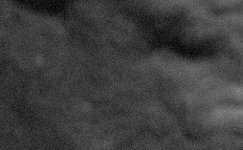My M Monochrom with the new sensor developed an "underperforming line" evident at ISO 10,000. Well that was annoying. It took me one morning to write code to correct the error. I "hardwired" the code to my camera, meaning "Column 3203 row 3105", found by looking at the image in Photoshop. I'm playing with the code, want to make it find errors by itself, than apply the correction.
Sensor remapping normally means a bad line is "averaged over" by its neighbors. You lose information. If a line is completely dead, it's better than nothing. If the pixels get shifted through a "leaky cell", the values in the line are dragged down to a lower voltage, but detail is still present.
The Fortran code is written for the Open-Watcom F77 compiler, released in 2017. No Assembly required- I rewrote all of the assembly language routines to use Watcom routines. Always happy to give out source code.
Sensor remapping normally means a bad line is "averaged over" by its neighbors. You lose information. If a line is completely dead, it's better than nothing. If the pixels get shifted through a "leaky cell", the values in the line are dragged down to a lower voltage, but detail is still present.
The Fortran code is written for the Open-Watcom F77 compiler, released in 2017. No Assembly required- I rewrote all of the assembly language routines to use Watcom routines. Always happy to give out source code.












